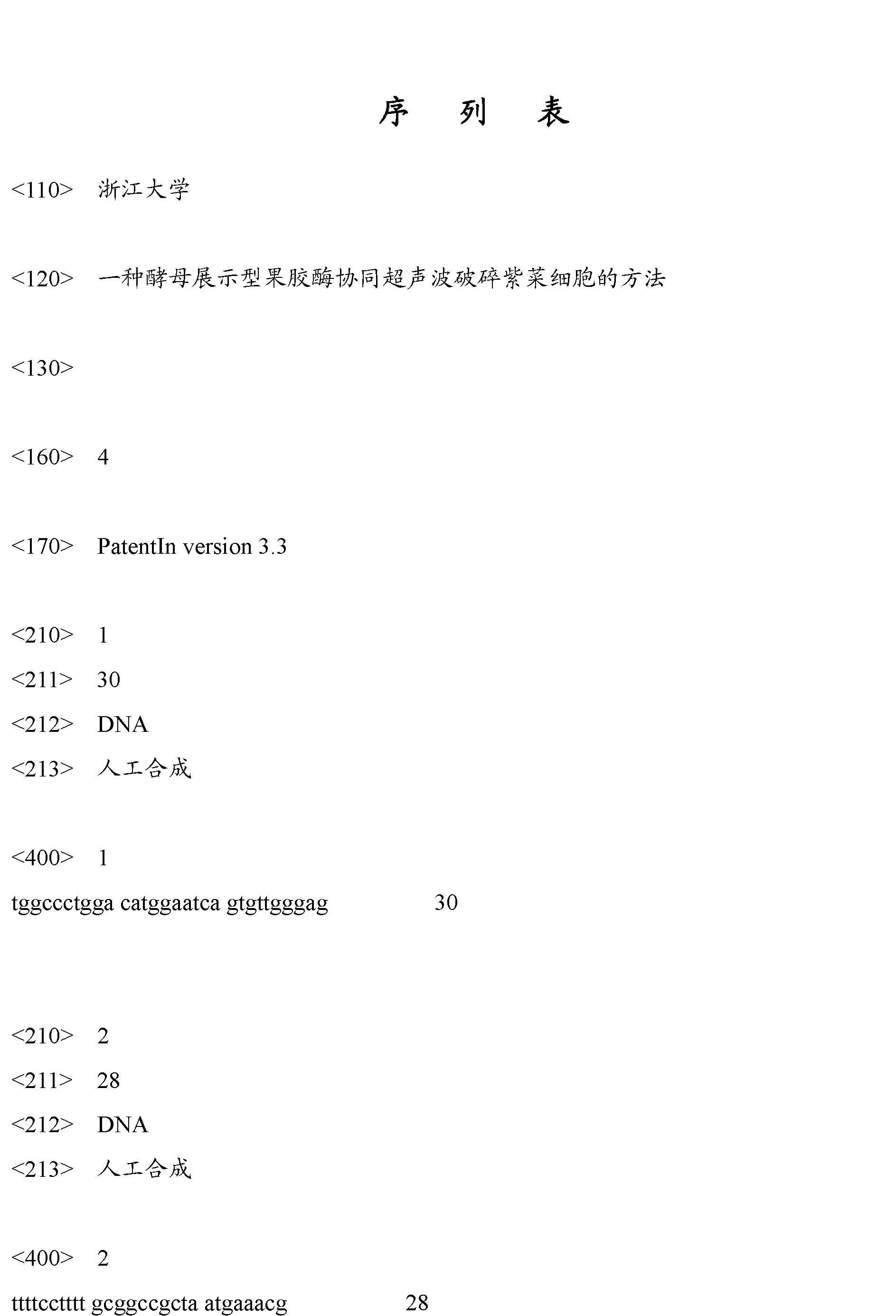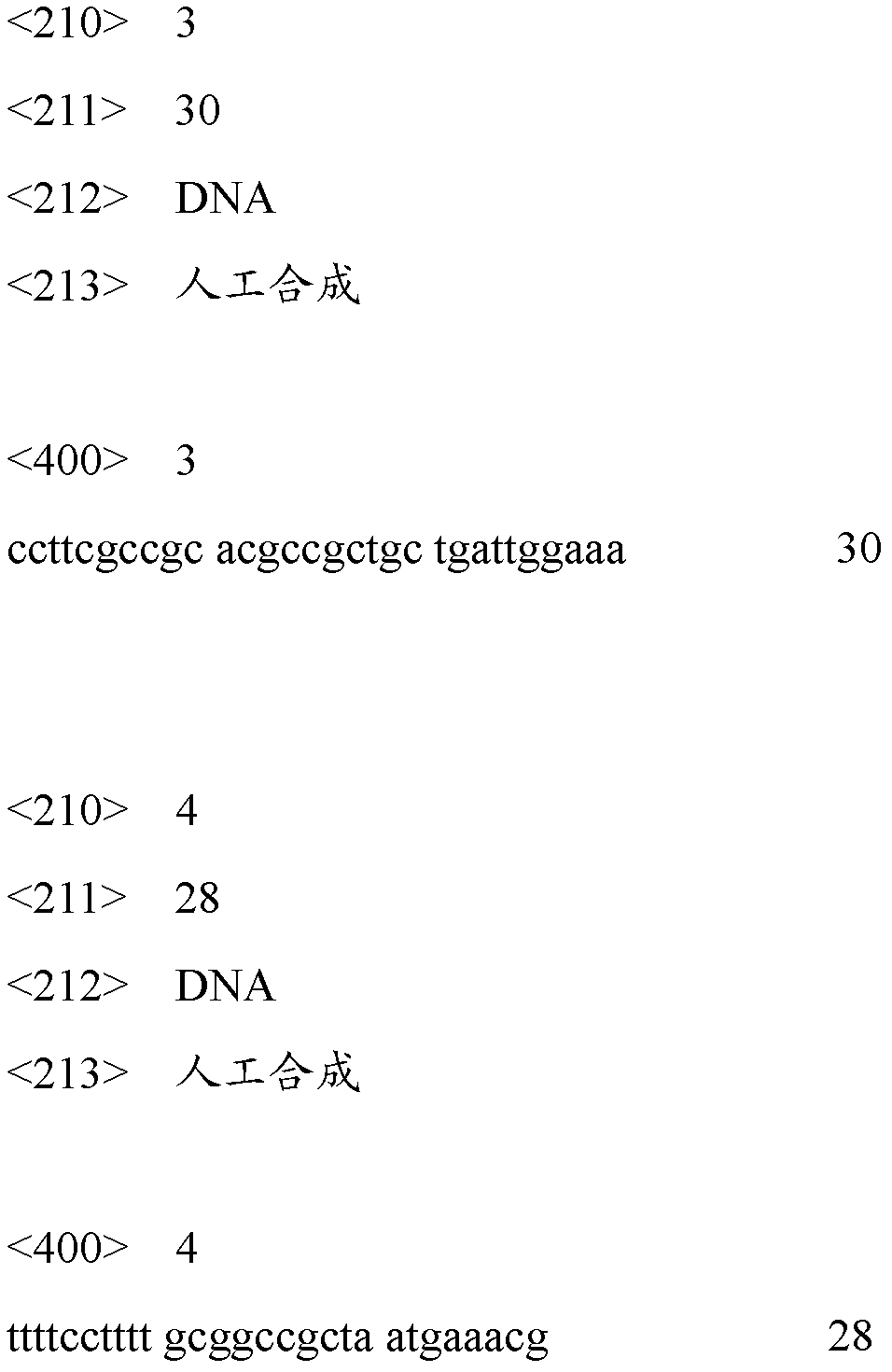Method for disrupting seaweed cells by using yeast display pectinase cooperated with ultrasonic waves
A technology of pectinase and ultrasound, applied in the field of bioengineering, can solve the problems of unfavorable extraction of laver polysaccharides and laver protein, affecting the efficiency of laver cell disruption, etc.
- Summary
- Abstract
- Description
- Claims
- Application Information
AI Technical Summary
Problems solved by technology
Method used
Image
Examples
Embodiment 1
[0026] Example 1 Preparation of Yeast Displayed Pectinase and Yeast Displayed Protease
[0027] By artificial synthesis, pectinase gene (Genbank number: GU277799.1), protease gene (Genbank number: NM_012708.2) and cell wall α-lectin gene of Pichia pastoris GS115 (Genbank number: M28164) were synthesized. The C-terminus of the pectinase gene (or protease gene) is added with the connecting peptide sequence GSSGGSGGSGGSGGSGS (linker), and the nucleotide sequence PEC-linker-α-agglutinin (or PRO-linker-α-agglutinin) is obtained after the connection, and the two Add EcoR I and Not I restriction sites at the end, where PEC is the pectinase gene (PRO is the protease gene), and α-agglutinin is the cell wall α-lectin gene.
[0028] Using the above artificially synthesized sequences as templates, PCR amplification was carried out using the following primer pairs respectively,
[0029] Primer pairs for pectinase:
[0030] Upstream primer: 5'-TGGCCCTGGACATGGAATCAGTGTTGGGAG-3';
[0031] ...
Embodiment 2
[0039] Example 2 Yeast Displayed Pectinase Collaborative Ultrasonic Disruption of Porphyra Cells
example 1
[0040] Example 1 Prepare a mixed suspension with 1000 grams of water, 20 grams of dried seaweed powder, and 1 gram of yeast-displayed pectinase. The stirring speed of the system is 100 rpm, the temperature is 35°C, and the treatment time is 30 minutes. The power was 730W, the ultrasonic treatment time was 65min, and the treatment temperature was 30°C to obtain a cell disruption solution, which was centrifuged (4000g for 30min) to remove the precipitate, and then the yield of laver protein and laver polysaccharide in the supernatant was measured.
PUM
 Login to View More
Login to View More Abstract
Description
Claims
Application Information
 Login to View More
Login to View More - R&D
- Intellectual Property
- Life Sciences
- Materials
- Tech Scout
- Unparalleled Data Quality
- Higher Quality Content
- 60% Fewer Hallucinations
Browse by: Latest US Patents, China's latest patents, Technical Efficacy Thesaurus, Application Domain, Technology Topic, Popular Technical Reports.
© 2025 PatSnap. All rights reserved.Legal|Privacy policy|Modern Slavery Act Transparency Statement|Sitemap|About US| Contact US: help@patsnap.com



